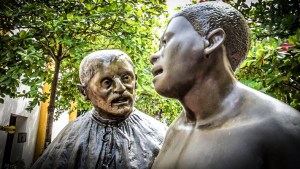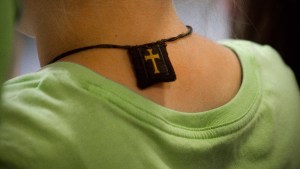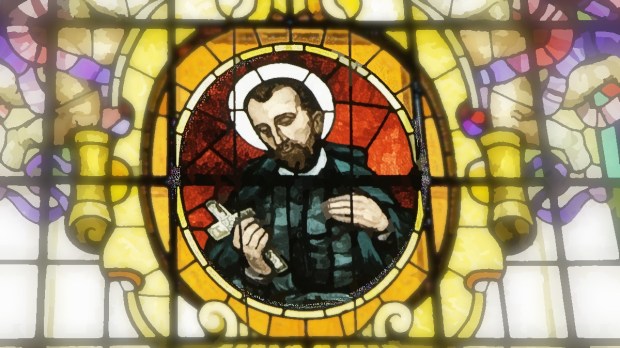St. Peter Claver was a Jesuit missionary from Spain during the 17th century. who was encouraged by fellow Jesuit St. Alphonsus Rodriguez to serve in the colonies of “New Spain.” Claver volunteered to be sent there, and shortly after he arrived he became appalled by the slave trade and the living conditions of the enslaved people.
Another Jesuit priest had already started ministering to the spiritual needs of the slaves, but St. Peter Claver took it a step further. Instead of focusing only on their conversion and baptism, Claver was more interested in tending to their physical needs.
Claver would board the slave ships that came in and began his work by caring for the people. One of his letters summarizes his daily experiences.
We laid aside our cloaks, therefore, and brought from a warehouse whatever was handy to build a platform. In that way we covered a space to which we at last transferred the sick, by forcing a passage through bands of slaves. Then we divided the sick into two groups: one group my companion approached with an interpreter, while I addressed the other group. There were two blacks, nearer death than life, already cold, whose pulse could scarcely be detected. With the help of a tile we pulled some live coals together and placed them in the middle near the dying men. Into this fire we tossed aromatics. Of these we had two wallets full, and we used them all up on this occasion. Then, using our own cloaks, for they had nothing of this sort, and to ask the owners for others would have been a waste of words, we provided for them a smoke treatment, by which they seemed to recover their warmth and the breath of life. The joy in their eyes as they looked at us was something to see.
Above all St. Peter Claver wanted to ensure these enslaved people were treated as true human persons, not as animals. He didn’t care what others thought of him and instead wanted to live out the Gospel of Jesus Christ.
In the same letter Claver explains how this “language” of healing was the best language he could have ever used.
This was how we spoke to them, not with words but with our hands and our actions. And in fact, convinced as they were that they had been brought here to be eaten, any other language would have proved utterly useless. Then we sat, or rather knelt, beside them and bathed their faces and bodies with wine. We made every effort to encourage them with friendly gestures and displayed in their presence the emotions which somehow naturally tend to hearten the sick.
With such tender care for each individual person, it is no surprise that nearly 300,000 people were baptized by St. Peter Claver. These enslaved people chose baptism, knowing that Claver desired the best for them. They trusted him, not because of the depth of his theological knowledge, but because of the charity that he showed to them. Claver’s method of evangelization is one of the best as it gets to the core of the Gospel, reminding us all that our faith must find expression in our actions.

Read more:
“No life, except the life of Christ, has moved me so deeply as that of Peter Claver”

Read more:
This is why Satan hates the Brown Scapular

